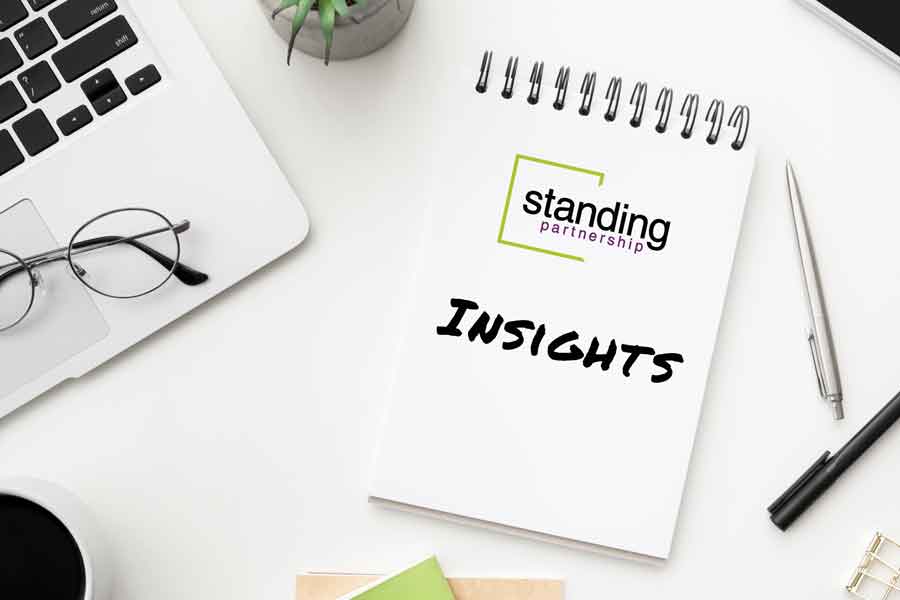How to Improve Customer Experience through B2B Journey Mapping
The B2B customer experience can be a complicated process. Improve customer experience with four common journey map frameworks.
The way we buy consumer products has been revolutionized. Retailers like Amazon and Target make virtually anything a few clicks and two days from arriving at your door. Those retailers, along with same-day delivery companies like Instacart, further changed our shopping habits as consumer needs and lifestyles evolved in recent years.
B2C companies made it easy for consumers to get what they want, when they want it, whether it’s an internet-connected exercise bike to deal with all the chocolate milk shakes we’ve been ordering from DoorDash or a chocolate milk shake to reward ourselves for using that new exercise bike.
For B2B buyers, this process isn’t so easy. Many of our clients operate in complex industries that include multiple stakeholders in the decision-making process. But those B2B buyers don’t care about the complexity. They’ve been empowered by Amazon, DoorDash and Instacart. They carry those expectations to their 9-1o-5 purchase decisions as well.
That doesn’t mean they expect free two-day delivery on custom machinery that takes months to manufacturer. But they do expect it to be easy to find what they need, understand how much to spend and that the product or service will work as they expected.
That starts by understanding what customers go through during the buying process through customer journey mapping. Working with customers to understand their perspectives, needs and expectations reveals the gaps between your organization’s experience and your customers’ expectations.
There are several types of customer journey maps one can use. Choosing the right framework depends on the end-goal and context of the insights you need about your customers. These are the four most common journey map frameworks your company can choose from:
1. Current State (as-is) journey maps highlight customers’ existing pain points as they attempt to accomplish their goals. This framework is beneficial for companies to understand the end-to-end customer experience, develop empathy and determine why customers might be seeking your services. Refining your company’s current journey map can:
- Communicate frustrations
- Generate investment buy-in
- Create alignment and prioritization around issues
- Plan incremental Cx improvements
- Find opportunities for feedback or measurement
2. Day in the Life journey maps are variations of the current state but with a specific focus that helps organizations understand the role they can play. Customers document everything as they go about their daily routines, whether it’s in a journal, a mental note or telling a friend about something that happened. Customers give unique exposure to their lives, even if it doesn’t include your company or product. Choosing this framework can help your company:
- Explore a broader context of a persona
- Gain in-depth knowledge of what people do, think and feel
- Drive innovation through unmet needs
3. Future State (to-be) journey maps communicate the ideal customer experience with future goals and strategies. This specific framework can be useful for companies to imagine how customers may interact with a business or product that may not be in existence yet. Choosing this framework can help your company:
- Communicate north star vision or end-goal
- Imagine and experiment with new experiences
- Direct new product, service and experience design
4. Service Blueprint diagrams build upon current or future-state journey maps. They visualize how well your organization’s workforce and technological processes align to deliver the brand’s customer experience. This framework often combines multiple personas and communicative results into a customer-facing, behind-the-scenes orientation, allowing your company to:
- Identify the root causes of pain points
- Communicate gaps
- Plan for substantial Cx improvements
- Define needs to support “to-be” experiences
Creating a positive customer experience for B2B brands can be a complicated process but choosing the right journey map framework can help your company identify roadblocks in reaching a mutual end-goal.
For more information, please contact us at inquiries@standingpartnership.com.
Featured Insight
Designing a Business-Forward SME Program: Identify Your Thought Leaders
With today’s competitive business landscape, organizations feel the pressure to cultivate thought leaders, also known as subject matter experts (SMEs), inside their own doors. Without thought leadership content and strategy,…

